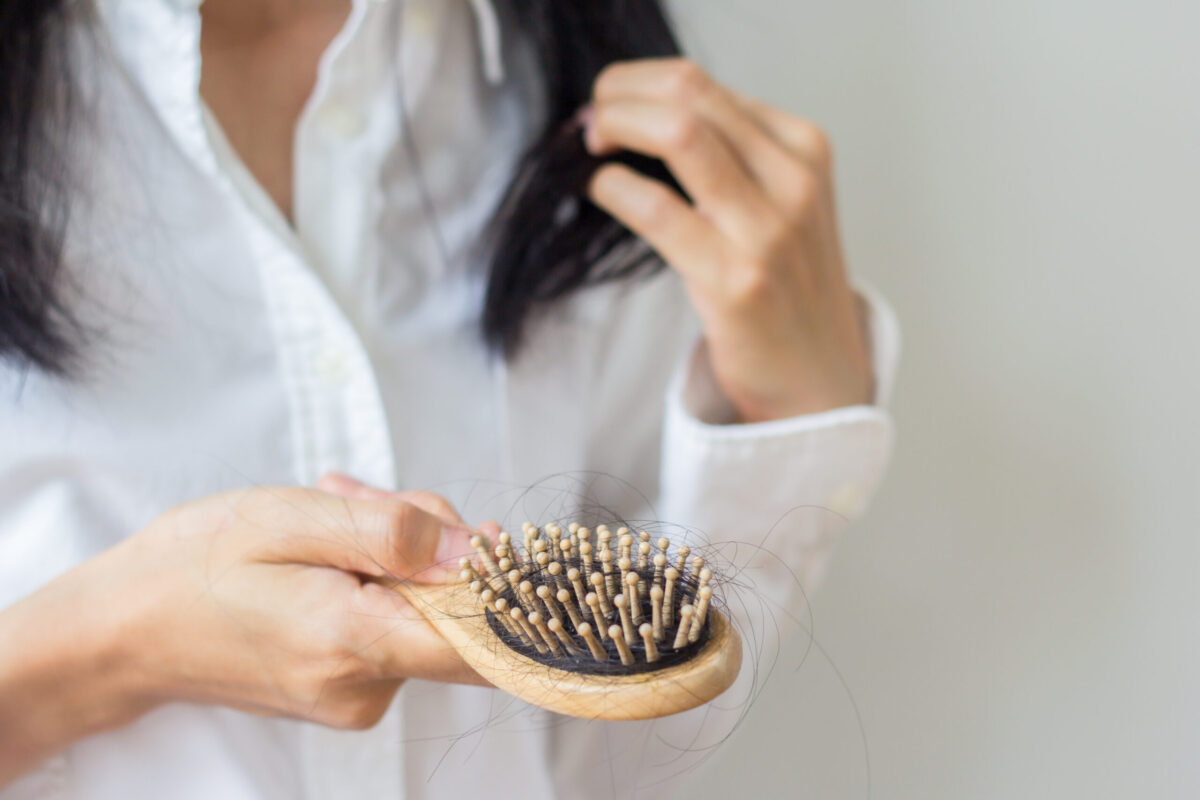What comes to mind when you hear the words “hair loss?” For most of us, hair loss is a cosmetic problem that mostly affects men — or at least that’s what the ads on TV have told us. But in reality, there are many factors that can lead to hair loss, some of which may be due to underlying health problems.
“Hair loss has many causes, most of which are related to the individual hair follicles,” says Dr. Daniel Cusator, a medical director in care management for BlueCross BlueShield of Tennessee. “People forget that their skin is an organ in and of itself. It’s the biggest organ we have, and it’s extremely complex.
“Skin has dozens of functions, one of which is to provide the structure for healthy hair follicles. As part of the skin, hair follicles are connected to so many functions. They’re also affected by any changes to your body: hormones, eating patterns, medication, trauma. If even one of those things changes, hair growth can be affected.”
5 key questions about health and hair loss
1. What are the most common causes of hair loss?
Dr. Cusator: The three types of hair loss include hair cycling, inflammation (which damages hair follicles), and abnormalities of the hair shaft (inherited or acquired).
Patterned hair loss, for example, is a genetic condition in which hormones affect the hair follicle. Another common type of hair loss is alopecia areata, which is an autoimmune disorder that affects patches of hair and causes thinning.
But the majority of hair loss isn’t really hair loss; It’s just a change in the normal cycle of hair growth and loss that we all experience. Everyone will have times when little or no hair is falling out, and others where it feels like it’s falling out in clumps. Most of the time we’re just noticing a natural process we typically don’t pay attention to.
Every hair follicle goes through 3 phases:
- Growth: Hair is actively growing from the follicle. Growth accounts for 90% of the scalp’s hair follicles.
- Stationary: The lower portion of the hair follicle stops growing. This accounts for about 1% of the scalp’s follicles.
- Resting: The hair loses its attachment at the skin and falls out. This accounts for roughly 9% of scalp follicles and lasts for 2-3 months. Our hair actually falls out at a rate of about 50-150 hairs per day.
2. What else can cause hair loss?
Dr. Cusator: If your hair loss isn’t genetic or already diagnosed, stress is the most likely culprit. Because of the hair-growth cycle, you may see hair loss weeks or months after a stressful event.
In addition to physical or psychological stressors, other contributing factors include:
- Hormonal changes or irregularities
Pregnancy, menopause, etc.
- Medication
Anticonvulsants, cholesterol-lowering drugs, etc. - Discoid lupus
An inflammatory condition that affects the skin - Trauma
Harsh chemicals or dyes that damage hair follicles - Pressure-induced hair loss
This can be seen after prolonged anesthesia during general surgery from the hair cap pressure
- Traction hair loss
Certain hairstyles pull on the hair follicles (tight braids, ponytails)
3. What causes genetic baldness?
Dr. Cusator: Slow, progressive loss of hair in genetically susceptible men is known as male pattern baldness. It’s caused by hormones acting on androgen-sensitive hair follicles. Female pattern hair loss is also possible and increases in frequency with age.
All of these clinical conditions affect the hair follicle itself, which is just one specialized cell that’s part of the dermis and epidermis. There are internal and external factors that play into how well your follicles function, but most likely, you’ll start seeing your “pattern” of baldness emerge at the same time it affected your parents or grandparents.
For example, my dad is 86 and he still has a full head of hair. My mom’s father, on the other hand, was balding in his 30s. I saw the early signs of male pattern baldness starting in my 20s, so it’s likely I got my grandfather’s genes for this particular trait.
4. What do women need to know about hair loss?
Dr. Cusator: Women are less susceptible to genetic hair loss, but it can still happen as they age. Typically there is no specific pattern — just a general hair thinning.
For women, causes of hair loss include:
- Products or treatments that damage the hair follicles
- Hormone changes, which can affect one of the three follicular phases
- Medicines, infections or diseases, and
- Stress, especially after surgery or other significant procedures.
There is also a genetic condition found primarily in women of African descent called central centrifugal cicatricial alopecia (CCCA) that can cause hair loss on the crown of the head, which gradually progresses in a centrifugal fashion.
5. What’s the best way to address hair loss?
Dr. Cusator: The most important first step is to be evaluated by your primary care physician (PCP). Your PCP will be able to assess common causes of hair loss, order any additional tests that may be needed and initiate a conservative treatment plan. They can also recommend additional specialist input if needed. Many times hair loss is a problem that’s reversible, and your PCP can help.
More from Dr. Cusator on WellTuned:
- Asthma guide: causes, triggers & how COVID-19 factors in
- Colonoscopy screening: is 45 the new 50?
- Real story: learning to take charge of your diabetes
Get more information about specific health terms, topics and conditions to better manage your health on bcbst.com. BlueCross BlueShield of Tennessee members can access wellness-related discounts on fitness products, gym memberships, healthy eating and more through Blue365®. BCBST members can also find tools and resources to help improve health and well-being by logging into BlueAccess and going to the Managing Your Health tab.


